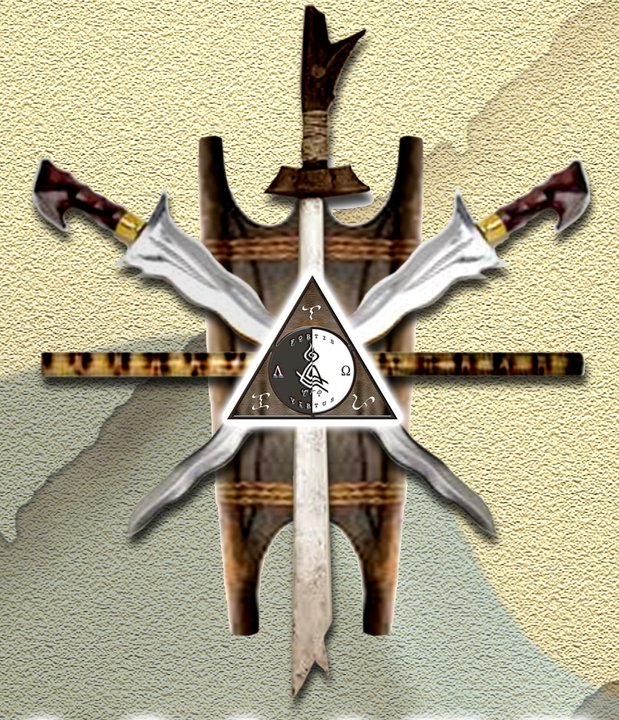From Wikipedia
Panantukan is the boxing component of Filipino martial arts, and is known in the Visayas as pangamot. It consists of upper-bodystriking techniques such as punches, elbows, headbutts and shoulder strikes. It also includes low-line kicks and knee strikes to the legs, shins, and groin, but some schools group this kicking aspect into the art of pananjakman, which relies on kicking and only uses the arms defensively. Some Western instructors teach panantukan as a separate martial art, but in the Philippines it is accepted as a part of eskrima.
Panantukan is not a sport, but rather a street-oriented fighting system. The techniques have not been adapted for safety or conformance to a set of rules for competition, thus it has a reputation as "dirty street fighting".[who?] Common targets include the biceps, triceps, eyes, nose, jaws, temples, groin, ribs, spine, and the back of the neck.
Some Filipino martial artists contest that the term Panuntukan be used since it came from the root word suntukan.
Moves which immobilise the limbs are called gunting (scissors) techniques because of the scissor-like motions used to stop an opponent's limb from one side while attacking from the other side. Panantukan focuses on countering an opponent's strike with a technique that will nullify further attack by hitting certain nerve points, bones, and muscle tissue to cause immediate partial paralysis of the attacking limb. Common limb destructions include guiding incoming straight punches into the defending fighter's elbow to shatter the knuckles (secoh), or striking the incoming limb in the biceps to inhibit the opponent's ability to use that arm for the remainder of the fight. Gunting focuses on destroying the opponent's ability to wield their weapon. This term derives from the word "scissors" in Filipino,Malaysian and Indonesian. In martial arts, gunting can be done by cutting the hand or wrist with a pair of blades (hence the name), but it can also be done with a single blade or with the empty hand by striking nerves and tensed muscles.
Panantukan borrows moves from dumog (upright wrestling) which twist and turn the opponent's body with the goal of exposing a more vulnerable area, such as the neck, jaw and temples. This is accomplished by the use of arm wrenching, shoving, shoulder ramming, and other off-balancing techniques in conjunction with punches and kicks. For example, the attacker's arm could be grabbed and pulled downward to expose their head to a knee strike.
The angles outlined in kali are incorporated to evade and parry incoming strikes and to attack the opponent from an outside angle where they are less able to defend themselves. Constantly switching the fighting lead allows for the exploitation of attack while maintaining flow. The fighter will often use a finishing strike or kick in a combination to step into the new lead. Footwork is of utmost importance for these techniques, so much time is invested into practicing stick-fighting drills and combinations.
Panantukan emphasizes speed in striking, with the intent of overwhelming the adversary with a flurry of attacks. Indefinite combinations of different strikes are strung together continuously to make successful defense a relative impossibility. Many strikes in panantukan are said to be performed on "half-beats", or in between the major strikes of a combination, so as to disorient and overwhelm an opponent, increasing the opportunity for more devastating attacks. An example of this could be performing a swift slap or eye strike after throwing a jab with the same hand in a standard jab-cross-hook combination; the eye strike both disrupts the defense against and masks the incoming cross. Additionally, low-line kicks are often executed between boxing combinations to further injure and disorient the opponent.
While panantukan is designed to allow an unarmed practitioner to engage in both armed and unarmed confrontations, it easily integrates the use of weapons such as daggers, wooden slivers, and palmsticks.[citation needed] These weapons can render panantukan's techniques fatal but do not fundamentally change how the techniques are executed. Weapons in panantukan tend to be small, easily concealed and unobtrusive. Daggers like the claw-shaped karambit are often preferred. Many of panantukan's unarmed techniques and movements were derived from the weapon-based forms of eskrima. Panantukan minimises contact with the opponent, as it is not known whether or not they are armed. As such, parries and deflections are preferred over blocks.







